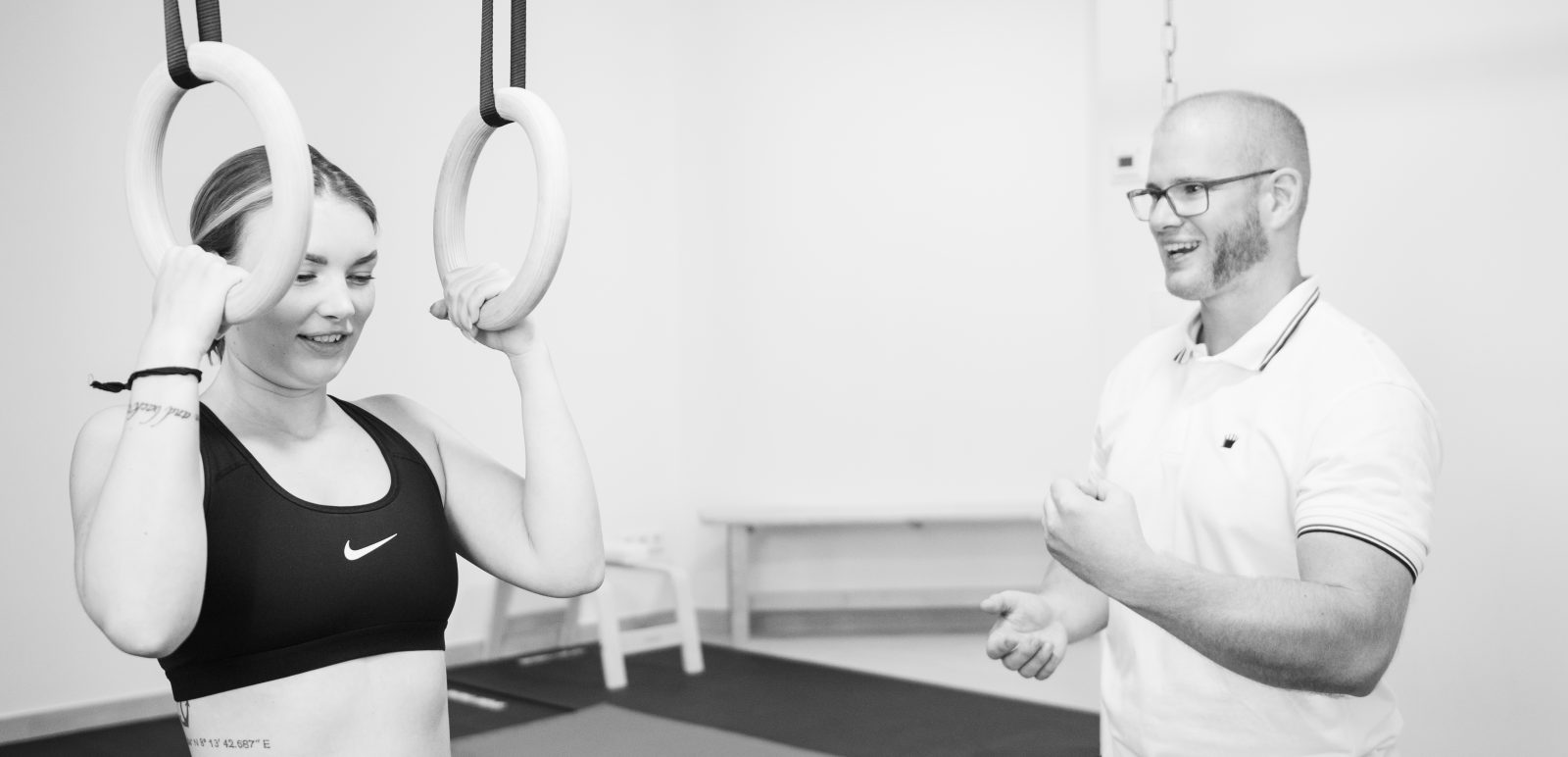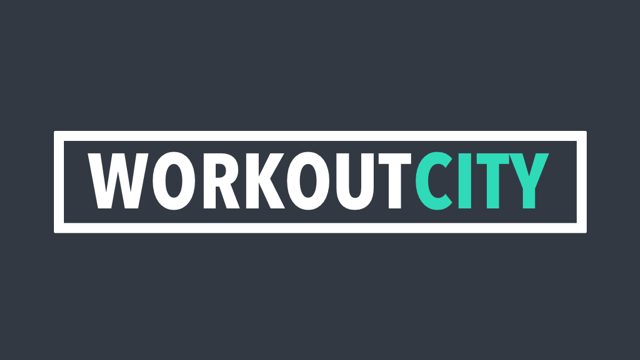Bridging like Pontifex Maximus
Or why to perform a Wrestler’s Bridge
By Jan Adams
“Victory goes over a bridge.” (Karl Gotch)
Bridge ain’t just for old English Ladies sipping Sherry. The Bridge is for everyone and should be performed regularly. It is the counterpart of modern work life. Forcing our bodies to strengthen the back muscles, legs and neck, creating flexibility in the spine, lengthening the psoas maior and widening the chest.
Our domesticated work life holds us in a sitting, forward leaning position, weakening our backs, pulling our heads forward until the cervical spine is deformed and the shoulders are rounded and narrowing the heart and lungs. And the constant sitting lifestyle shortens the psoas maior provoking backpain, disc slippings and bad posture.
Nowadays we have to go to doctors, physiotherapists or chiropractors hoping that they can solve our problems. But no one but ourselves can do that for us. We have to become the mistresses and masters of our bodies again.
In the old days of wrestling, boxing, weightlifting and bodybuilding it was well-known that the men and women had to take care for themselves. So it was common-sense to practice exercises that brought direct health-benefits. One of them was the Wrestler’s Bridge.
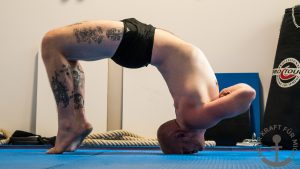
“I wish to impress upon all my students the great value of physical training connected with the bridge exercise. I want you to practice bridging every day, for you can find nothing that will develop the neck and back muscles to such an extent as bridging will do.
You already realize the importance of a very strong neck and it is entirely up to you to have a wonderful neck or not, depending entirely on the amount of study, and time of practice that you give the subject. A strong, well-developed neck is not only valuable to health and your personal athletic appearance, but important in wrestling as well.” (Farmer Burns, 1912)
The weightlifter George Jowett goes even further and supposes a strong neck creates nerve force. Besides this he thinks about the neck of a great sign of sexual attractivity.
„If I want to find out how much physical force a man possesses, or is likely to possess in a dormant state, I look at his neck. That never fails to answer my question. In both men and the other male beasts, the neck has always been the true indication of a quality and quantity of his concentratet nerve power. A strong and healthy man always has a powerful neck, and he always will have one.” (Jowett)
Jowett was quoted by another strength training author, Brooks Kubik. Kubik claims that every physical goal one wants to achieve will be easier achieved when nerve force is cultivated through neck and lower back training. In his opinion you have to work your neck uscles in order to get strong legs, lose body- fat, get a stronger grip or run faster.
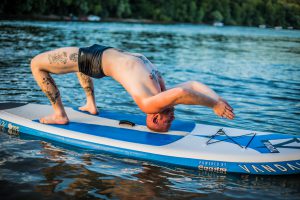
“It energizes, vitalizes and powerizes every muscle group. every organ, every internal system, every bodily process and every cell in your entire body.” (Kubik)
He goes on:
“The wrestler’s bridge is one of the best and finest exercises that you can do. It builds strength, power, health and organic fitness to a remarkable degree. It is literally a life- altering exercise. Make it a regular part of your training program, work it religiously and rigorously, and reap the resulting rewards.” (Kubik)
Jack Dempsey, one of the best boxers of all times and the great idol of Mike Tyson has a less romantic and more practical opinion on bridging regularly:
“Neck muscles should be strong to absorb the shock of head punches. The best exercise for strengthening the neck muscles is the “bridge”. Lie on your back on the mat. Lock your hands on your chest. Make a simple bridge by raising your body until it is supported by your feet and your head. Still in the simple bridge, roll back on your head until your forehead is touching the mat. Then return to the simple bridge, and then to your stretched-out position. Repeat the procedure several times.
[…] But those I’ve given you are plenty to help you become a well-rounded scrapper.”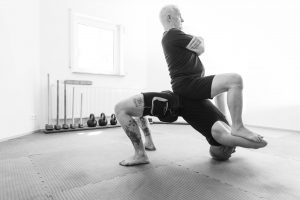
Jowett delivers more detailed information on correct performance of the bridge:
“The wrestler’s bridge is a favourite exercise with most body builders, but the have the wrong idea of this exercise. Seemingly, it is thought that wrestlers develop their powerful necks from bridging. True, from bridging, but not in bridging. What I mean is that their development is obtained from going up into the bridge and not in holding the bridge.[…]
Some find the bridge difficult to form. There is nothing to it. […]What he should do first is to draw the heels as close to the body as possible, then place the hands behind the head, and draw the head well under towards the shoulders. This done, thrust the leg so that the body weight is forced towards the head.
Now the best way to obtain the right effect upon the neck muscles is to bend the neck at the shoulders when in the wrestler’s bridge position , and simply lower the shoulders to the ground. Then by prying and pressing the head against the floor, raise into the bridge again. Full action is obtained from the neck muscles this way. Some make the mistake of swaying the body up on the head. That is wrong. Let your neck do the work, and you will find the exercise considerably more vigorous. When you feel you have become too strong for this movement, just hold a light barbell at arms’ length throughout the exercise, and you will get the right kind of resistance to continue your progression.
This exercise will get the trapezius nicely, but if you want to bring the sterno-mastoids into play all you have to do is twist the head from side to side, while in the bridge position, so that each time you bridge you roll onto the temple. However, be sure and make it a neck movement and not a motion done with the sway of the body. The further you twist to the side of the face the better will these neck columns work.” (Jowett, 1926)
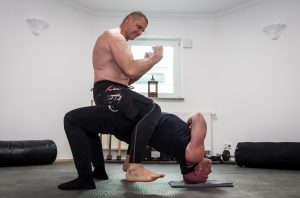
Another old-schooler and well-known for his incredible neck strength was Martin ‘ Farmer’ Burns. He was sporting a neck strong enough to hang himself on a gallow, jumping down of two meters height and whistling “Yankee Doodle” after the fall still swinging on the noose.
“Get down on your knees. Place hands behind your back, and your forehead on the floor. Use a soft quilt on the floor to prevent scratching or bruising forehead.
Now roll the head from side to side and forwards and backwards. Most of the weight of the body is supported on the neck, and gives the neck a tremendous amount of work. This is a splendid movement. It cannot be beat. Work until you are tired, but gradually extend the time from day to day. This is one of my own inventions. By long training I have developed my neck until no man can choke me with his hands however he hard he tries. Hundreds have attempted it and failed” (Burns)
Not only strength alone is developed by bridging, but also flexibility, stamina and mental power when holding the bridge position for some time. In Yoga exercises like the bridge are called heart openers. They widen the chest and give space to the heart and the lungs. Metaphorically you can they that an open heart is only possible with a strong and flexible back.
“Do not believe that the only way to obtain great back development and power is to employ nothing else but exercise that creates only movements of great muscular contraction. You must stretch the muscles also. The more elasticity and flexibility each muscle has, the more power your back will have.” (Jowett, 1938)
George Hackenschmidt, the famous wrestler and strongman, described neck exercises as the first exercise series in his book ‘The Way to Live’. It must be with some reason… Even if we can’t change the circumstances of work life, we can change our lifestyle and training to harmonize our body and soul.
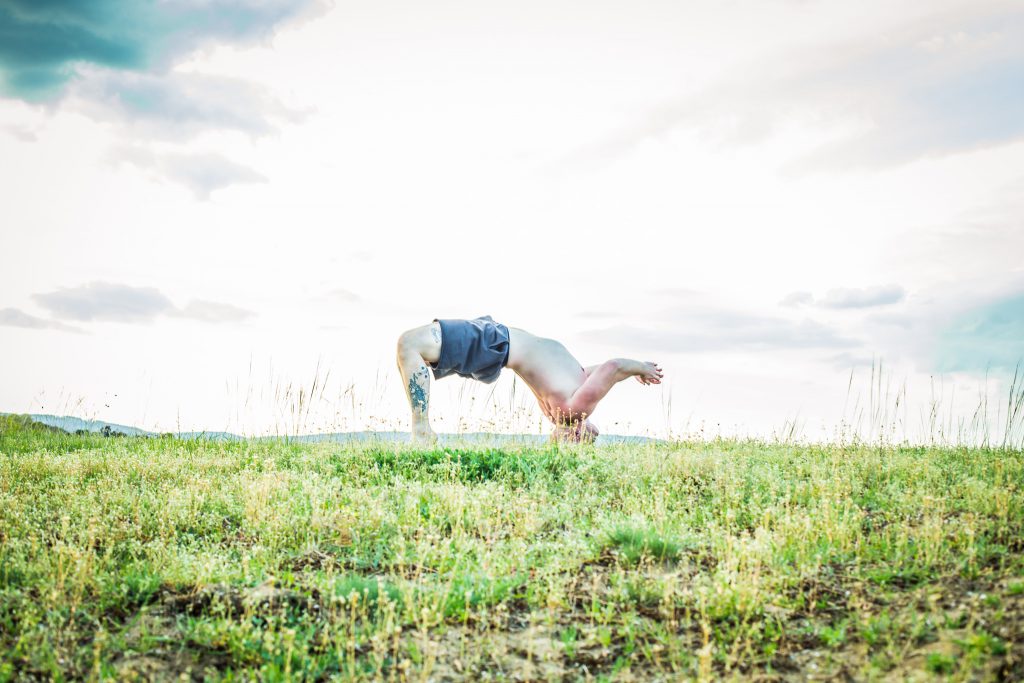
Sources:
Burns, Martin: Lessons in Wrestling and Physical Culture. 1912.
Dempsey, Jack: Championship Fighting. Explosive Punching and Aggressive Defense. New Yotk, 1950.
Jowett, George F.: The Key to Might and Muscle. 1926.
Jowett, George F.: Molding a Mighty Back. 1938.
Kubik, Brooks: Dinosaur Bodyweight Training. 2013.
Oakely, Sir Atholl.: Blue Blood on the Mat. The All-In Wrestling Story. 1964.

